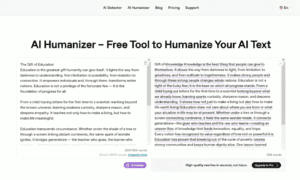Understanding Document Security Risks
To effectively protect important documents, first understand the risks associated with them. Various threats can compromise document security, from employee negligence to external intrusions. A careless act, like leaving critical paperwork unattended, can result in unauthorized access. Similarly, employees might unknowingly send sensitive information to the wrong email addresses and expose the data to outsiders. Physical theft remains a visible threat in many offices.
All these factors emphasize the need for a systematic approach to document security. When organizations recognize these vulnerabilities, they can create strategies to minimize risks effectively.
Physical Security Measures
While many offices focus on cybersecurity, robust physical safeguards can greatly enhance overall security measures. Utilizing workplace smart lockers for enhanced security is one practical solution. These lockers can offer secure physical storage for sensitive documents and provide an audit trail of access. This way, sensitive documents are not easily accessible to unauthorized individuals. Access control measures can restrict entry to key personnel only and provide a further layer of protection.
Surveillance systems like cameras can also deter theft and unauthorized viewing. Regular inspections of storage areas and document management processes can uncover vulnerabilities or lapses in security.
Implementing a Document Management System
A Document Management System (DMS) enhances control over who accesses, edits, or shares sensitive information. A well-implemented DMS allows organizations to classify documents based on access levels and sensitivity. This means that confidential materials can only be accessed by authorized personnel, reducing the likelihood of leaks. Digital systems include features like encryption and version control, which add layers of protection.
Organizations should also ensure that employees follow stringent protocols when handling documents. Training sessions can raise awareness of best practices, such as recognizing phishing attempts and proper document destruction methods. Employing a DMS safeguards documents and streamlines workflows.
Regular Audits and Compliance Checks
Regular audits are key to maintaining document security and compliance. Conducting thorough audits can help identify areas of improvement and ensure compliance with industry standards. These reviews should encompass both digital and physical document-handling practices. Organizations may want to verify that shredded documents are disposed of properly to prevent information retrieval.
Engaging an external consultant may provide fresh insights into your security practices. Create a finite schedule for audits so that they occur routinely (quarterly or bi-annually for the most part). Foster a culture of accountability among employees that can lead to improved adherence to security protocols. Regular compliance checks keep organizations well-prepared for potential internal and external threats.
Training Employees on Document Handling
Employees are the first line of defense in document security. Therefore, organizations must prioritize training that focuses on the significance of maintaining document integrity. Workshops should address best practices, including the correct methods for storing, accessing, and disposing of documents. Employees must understand the impact of data breaches and their repercussions on both the company and individual reputations.
Regular training sessions can include simulated scenarios and allow employees to understand potential threats. They can identify vulnerability points and learn how to respond effectively. By creating an awareness culture around document security, employees take personal accountability for safeguarding sensitive information. Building this foundational knowledge results in long-term sustainable security within the organization.
Leveraging Technology for Increased Security
Leveraging technology can be transformative for document security strategies. Encrypted storage and secure cloud access provide strong protection for sensitive documents. Utilizing advanced software can also assist in tracking who accesses particular files, cultivating accountability. Multifactor authentication adds a layer of security and makes it harder for unauthorized users to gain access.
Artificial intelligence tools can identify unusual document activity, alerting administrators to potential threats. These technological advancements present new opportunities to secure critical information effectively. The correct tools will enhance security measures and optimize efficiency by streamlining document-related tasks.
Adopting a Response Plan for Document Breaches
Even with the most stringent security measures, breaches can still occur. Organizations must adopt a clear response plan to mitigate damages if such an event arises. A response plan should outline immediate steps to take upon detecting a breach, such as isolating affected systems and informing relevant stakeholders. Don’t forget to keep employees informed fosters resilience during crises.
Organizations should conduct post-incident reviews. These analyses examine the breach’s circumstances and uncover opportunities for improvement. By adapting policies and security measures following incidents, organizations can bolster their defenses against future threats. A proactive response plan minimizes potential damage and enhances overall preparedness.
Implementing a holistic approach encompassing best practices, physical security measures, employee training, and technological solutions creates an effective security framework in every organization. Through vigilance, consistency, and regular assessments, organizations can create a resilient document security strategy that safeguards their most sensitive information.






























